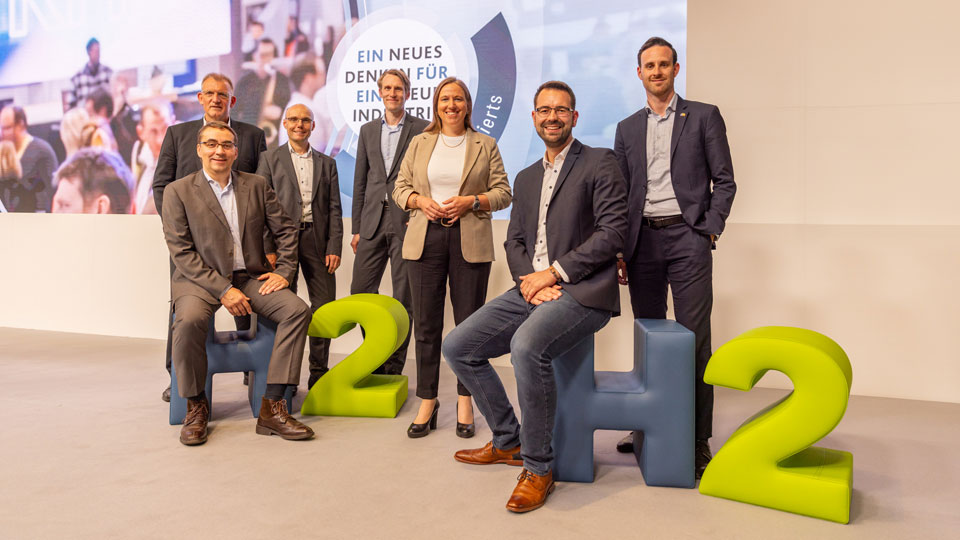Salzgitter AG's
hydrogen
tender
Salzgitter AG is one of Europe's leading steel and technology groups with over 150 years of experience. With the SALCOS® transformation programme of Salzgitter Flachstahl GmbH, primary steel production at the integrated steelworks in Salzgitter will be gradually converted to low-CO2 crude steel production by 2033. As part of the transformation, the previous carbon-based production process will be replaced by a new, hydrogen-based steel production route. Upon completion of the final stage, planned for 2033, up to 95 percent of the current annual direct CO2 emissions of around 8 million tonnes can be saved. This means that around one percent of German CO2 emissions can be avoided at the Salzgitter site alone.
Our tender for a
sustainable transformation
We are conducting a tender for the procurement of hydrogen for virtually climate-neutral steel production as part of our SALCOS® programme. The quantities of hydrogen we can use in SALCOS® expansion stage 1 are up to 150,000 tonnes per year. It must be possible to assign the required hydrogen to one of the two categories:
Category B
Hydrogen that reduces life cycle greenhouse gas emissions by at least 70 % compared to the fossil comparative value of 94 g CO2e/MJ (see Delegated Regulation (EU) 2021/2139) ⓘ
How does the hydrogen get to our steelworks in Salzgitter?
The plan is to supply hydrogen via the future hydrogen core network (only available in German) or a comparable direct hydrogen pipeline. Further information on the current status and plans for the hydrogen core network can also be found here.
The place of fulfilment for the hydrogen supply is our steelworks in Salzgitter.
Registration form for suppliers under the Request for Interest (RfI) programme
Are you a potential hydrogen provider or supplier and interested in supporting our SALCOS® programme?
For further information, please send us a message in the form of a Request for Interest by 9 July 2024. Please only use the registration form below.
ⓘ Category B
Commission Delegated Regulation (EU) 2021/2139 of 4 June 2021 supplementing Regulation (EU) 2020/852 of the European Parliament and of the Council for determining the conditions under which an economic activity qualifies as contributing substantially to climate change mitigation or climate change adaptation and for determining whether that economic activity causes no significant harm to any of the other environmental objectives (OJ L 442, 9.12.2021).


